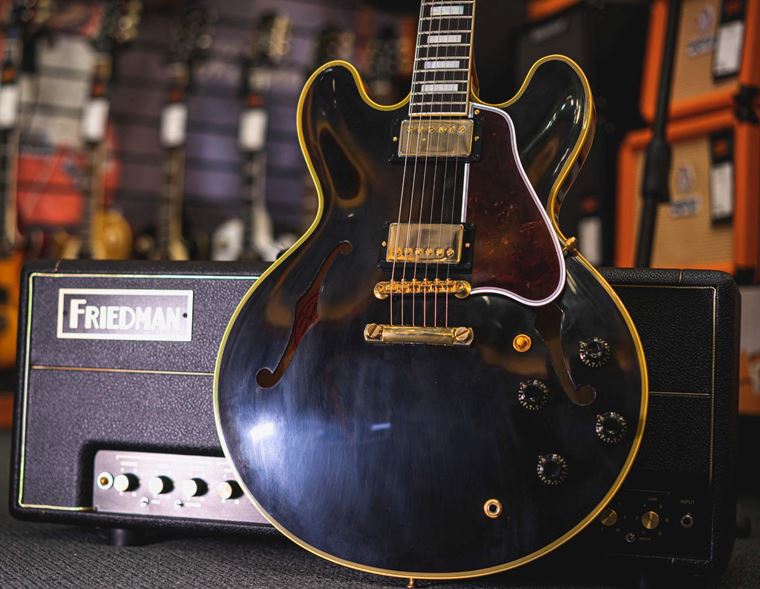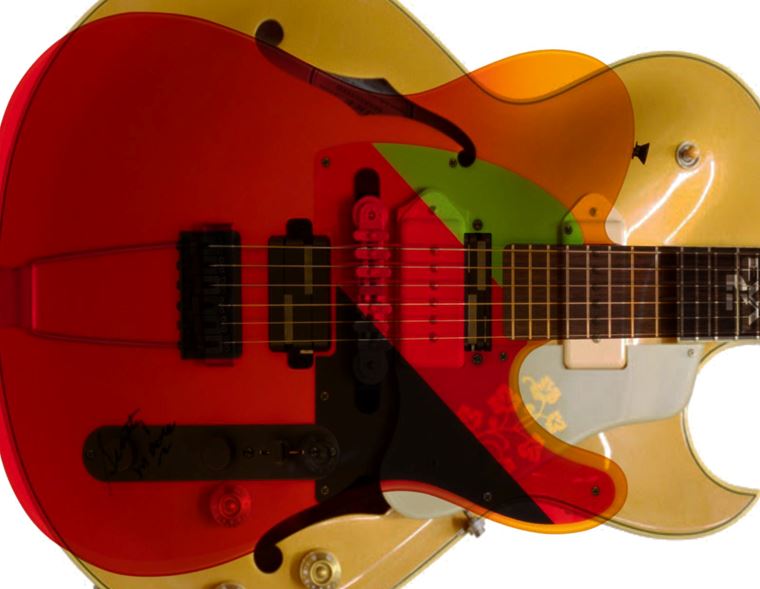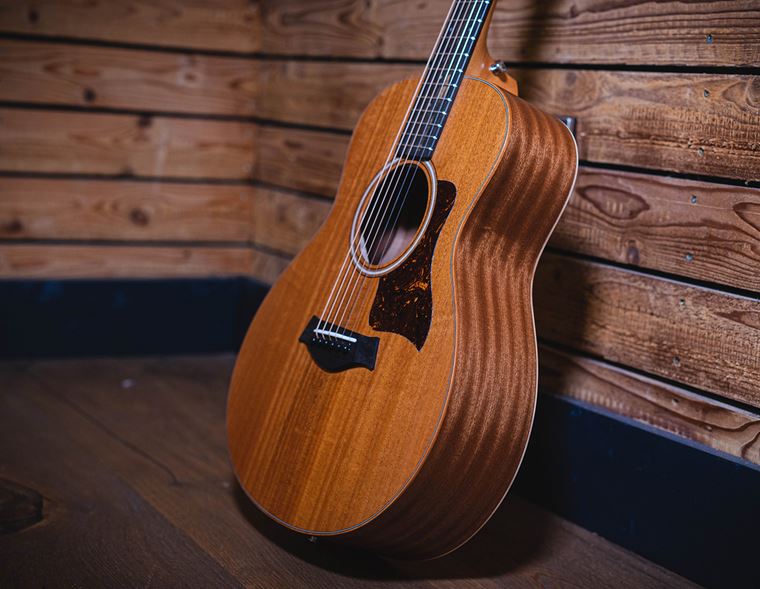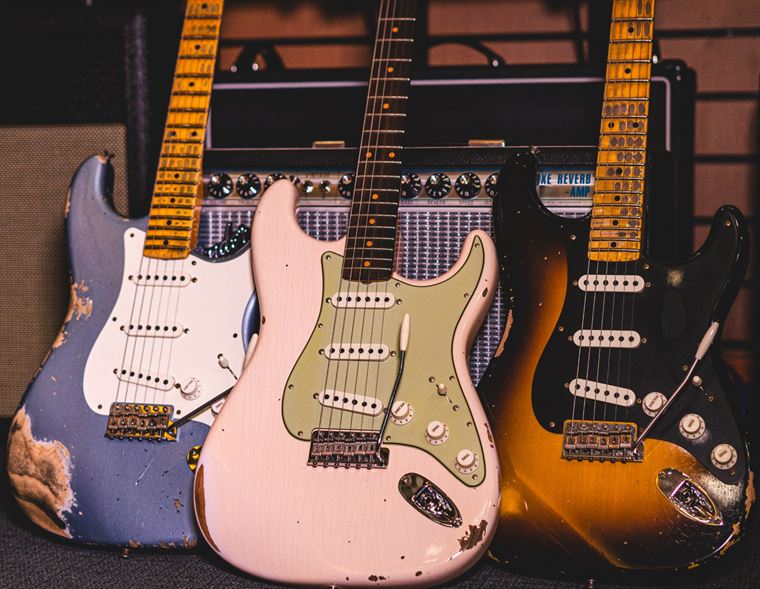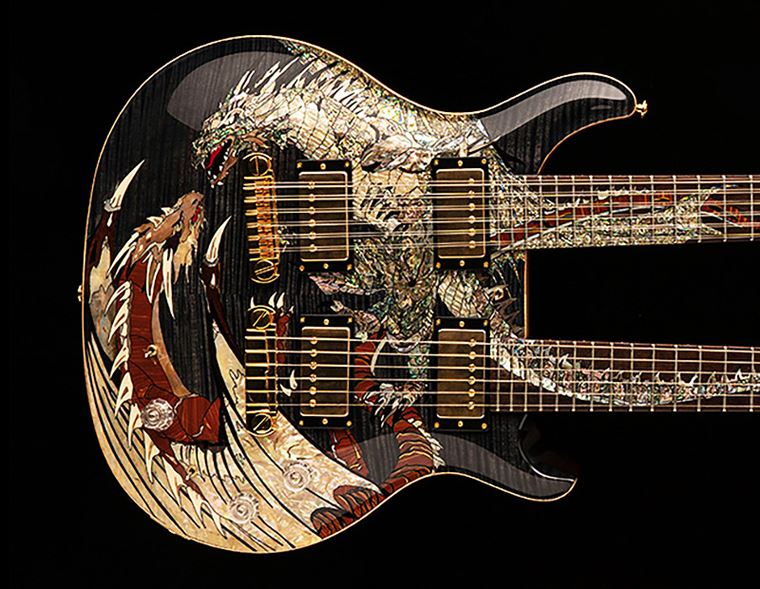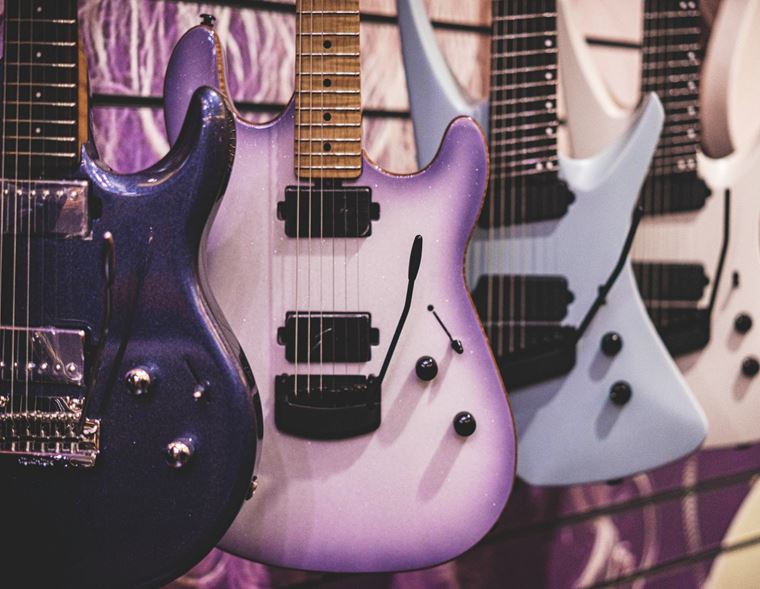Gibson Les Paul Models Compared: Our Expert Guide
Published on 09 May 2024
The Gibson Les Paul: one of the best known guitars in the universe, but when you stop to think about it, there are actually quite a few versions of this famous axe out there. I’m not even talking about copycats and lookalikes, either: Gibson have made a dizzying amount of Les Paul varieties, with a correspondingly wide range of prices.
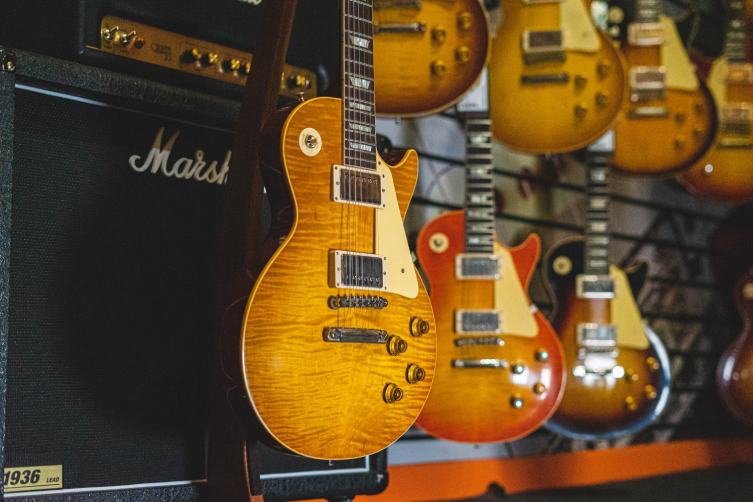
How do they all compare to one another?
That’s what I aim to investigate today. The Les Paul has been my main go-to guitar for well over 20 years now, and as a team member at guitarguitar, I’ve had my hands on literally hundreds of different Gibson Les Pauls. From affordable Studios to genuine vintage 50s Les Paul Standards, I’ve played ‘em all, and today’s blog will reflect those years of experience. What I’ll not try to do too much of is get subjective about it all: it hardly matters to you which finishes or neck profiles I prefer, but a little bit of personal experience may help us get where we need to go in the end.
Are you looking for a new Les Paul guitar? If you are, I’ll go through the main Gibson models available today and discuss their differences. I may stop short of listing each and every Murphy Lab variant though, but for the main Gibson USA range - both Original and Modern - I’ll have a hot take for you right here. Let’s go!
Contents
Original Collection Les Paul Standards
Other Original Collection Les Pauls
Comparing the Original Collection Les Pauls
Comparing Modern Collection Les Pauls
Original & Modern
Since the brand refreshed themselves a few years ago, Gibson have divided their main offerings into two distinct collections: Original and Modern. If you were to take a wild guess at what makes up these collections, I reckon you’d be pretty much on the money: the Original Collection are more vintage in spec, and are generally not weight-relieved.
The Modern Collection is where you’ll find weight-relieved bodies, metallic finishes and extra switching options. These two collections take in all of the main Gibson electric guitar designs, but today is all about the various Les Paul models. There are loads!
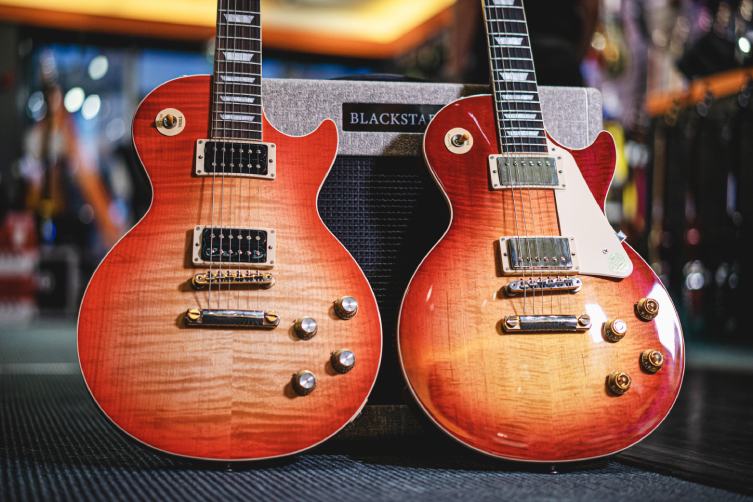
Relative to All Les Pauls
Before I dive into the various models and collections out there, I should first indicate some absolutes across the range. Regardless of which Gibson Les Paul you go for, you can expect to find the following…
- Mahogany Body
- Set neck construction, neck joined at a slight back-pitch to the rest of the body
- 24.75” scale length
- Back-angled headstock
- Tune-o-matic bridge (normally with a stopbar tailpiece, but not always!)
- Nitrocellulose finish (whether gloss or matte ‘faded’)
- 3-way pickup selector and four control knobs (Apart from the Junior)
- Pickups and configuration can vary, but overwhelmingly its two PAF-style humbuckers
Original Collection Les Paul Standards
Let me begin with the Original Collection, then. This is where you find 50s, 60s & 70s Les Paul Standard models, each with their own specification. It used to be a simple thing, where the 50s Les Paul had a chunkier neck and the 60s model had a slightly skinner one. Nowadays, on top of that there are different pickups too, and three different varieties of finish/top, which I’ll summarise here:
- Les Paul Standard 50s: thicker neck profile, BurstBucker 1&2 pickups (these pickups use Alnico II magnets for a warmer tone)
- Les Paul Standard 60s: thinner neck profile, 60s BurstBucker pickups (these have Alnico V magnets in them for a brighter sound)

The following are available in both 50s and 60s iterations…
Les Paul Standard 50s or 60s: the textbook Les Paul Standard, with a figured maple top on a mahogany body. This is available in a variety of Sunburst finishes, though be advised that different bursts are available between the 50s and 60s variants.
Les Paul Standard Plaintop: plain maple top (no figuring), range of solid and metallic single colour finishes (including Cardinal Red, Inverness Green and Classic White)
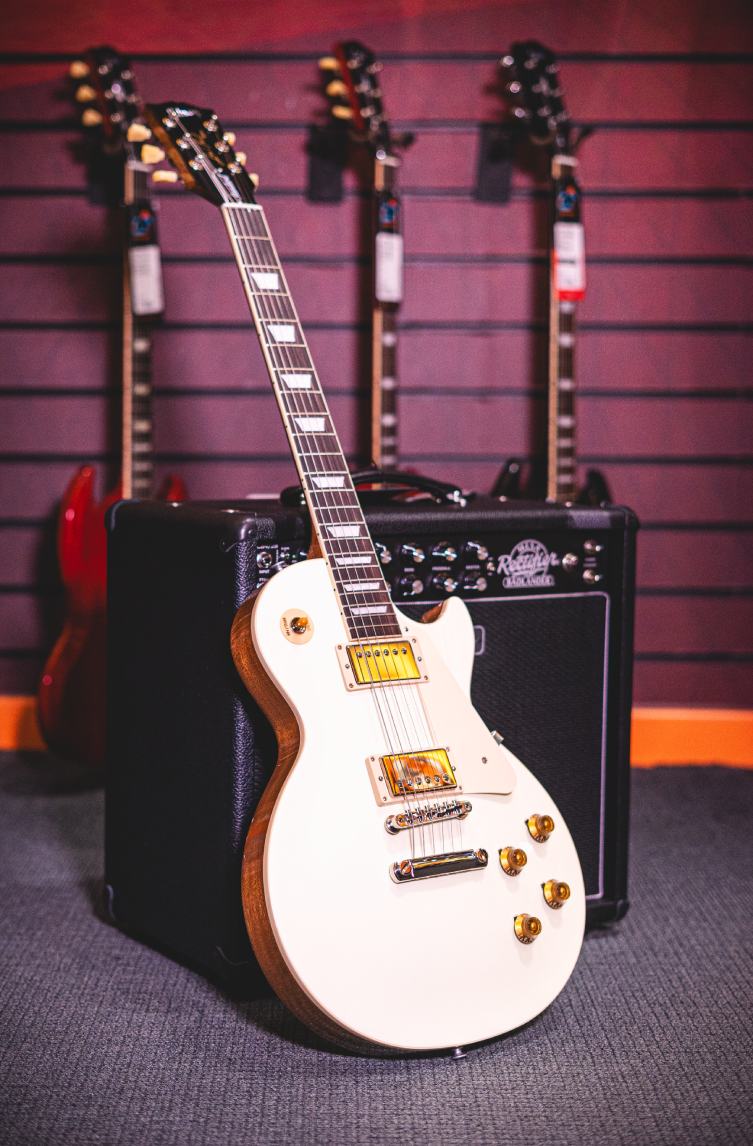
Les Paul Figured: AA-grade figured maple top and a selection of translucent burst finishes. These finishes are not your typical bursts: we’re talking about colours like Translucent Fuchsia and Blueberry Burst.

Les Paul Standard Faded: these have matte nitrocellulose finishes on top of the mahogany body and AA figured maple top. Open coil humbuckers are used (same variants for 50s and 60s as with other equivalent Les Paul models) and there is no pickguard fitted. Finishes are a variety of Sunbursts.
So, to summarise by way of comparison, if you opted for, say, a Gibson Les Paul Standard Faded 50s Vintage Honey Burst, you have a guitar with a thicker neck, a set of BurstBucker 1&2 humbuckers and a matte nitrocellulose Vintage Honey Burst finish. The pickups will be open coil units and there will not be a pickguard. Make sense?

Other Original Collection Les Pauls
These Les Pauls also belong to the Original Collection, but don’t easily fit into the above format. Whether it’s a pickup change or a different model entirely, here are the rest of the Original Collection Les Pauls:
- Les Paul Standard 50s P-90: this is the same as the Standard 50s but has a set of P-90 single coil pickups instead of the typical PAF-style humbuckers.
- Les Paul 70s Deluxe: the main differences here are a ‘Rounded C’ neck profile and a set of mini humbuckers, which provide a slightly skinnier, sharper tone than PAF pickups.
- Les Paul Junior: single cutaway version of the classic, with one P-90 pickup. I’d argue that this is a different guitar design altogether from a typical Les Paul, with its own sound, feel and vibe.
- Les Paul Special: Similar to the Junior but with two P-90s, four control knobs and a bound fingerboard.

Comparing the Original Collection Les Pauls
When trying out Original Collection Les Paul guitars, the quick rule of thumb is this: 50s means thicker neck and warmer pickups; 60s means thinner neck and brighter pickups.
The other main difference is of course the colour options, but I’d dare to suggest you don’t allow this to overly influence your choice! That said, if you must have a goldtop, for example, then it’s a matter of selecting humbuckers or P-90s, because that finish is only available as a 50s model.
Try both varieties and you’ll probably find you prefer either a 50s neck or a 60s one. Then, you decide if you want a figured top or not, and remember to try the Faded series, because the matte finish is super comfortable. Just remember that matte finishes do tend to ‘shine up’ in heavily-used areas!

Modern Collection
The Modern Collection, then, is where you won’t find any Les Paul Standards. This is for all of the versions of Les Paul that have a more contemporary aesthetic, or include features that wouldn’t sit right within the parameters of the more retro/vintage Original Collection. Many of these guitars will have weight relief to some degree or another (‘9-hole weight relief’ has less mahogany removed than ‘Ultra Modern Weight Relief’). Some players have an issue with Les Pauls having little hollow holes in the middle of the body (where nobody can possibly see them), but I’d suggest trying them for yourself, since I’ve personally never had a problem with them!
Here’s a rundown of what you can find.

Les Paul Modern: Ultra-modern weight-relieved body, ebony fingerboard with compound radius, asymmetric neck profile, locking tuners, Burstbucker Pro and Pro+ pickups, 4 push-pull controls for coil tapping, phase switching and pure bypass.
Les Paul Modern Figured: same as above but with AAA figured top.
Les Paul Classic: 9-hole weight relief, Slim Taper neck profile, 60s Burstbucker pickups (open coil instead of metal covers) with 4 push-pull controls for coil tapping, phase switching and pure bypass.
Les Paul Modern Studio: Ultra-modern weight-relieved with very stripped down look: no binding or figured top. Contoured neck heel for easier access, slim tapered neck profile, compound radius, ebony fingerboard, 498T/490R pickups, gloss finish, 4 push/pulls for coil tapping, phase switching and pure bypass.
Les Paul Studio: same as above but without the neck heel contour, compound radius or Ebony board. 2 push/pulls instead of four.

Les Paul Modern Lite: thinner body, dot inlays, satin finish, 498T/490R pickups
Les Paul Tribute (also listed as Studio Tribute): Ultra-modern weight relief, satin nitro finish, 490 R&T pickups, no body binding.
Les Paul Supreme: arched back (as well as front) body with Ultra-modern weight relief, lots of extra decoration (fingerboard inlays, headstock binding etc), Burstbucker Pro pickups with 4 push/pull controls for coil tapping, phase switching and pure bypass.
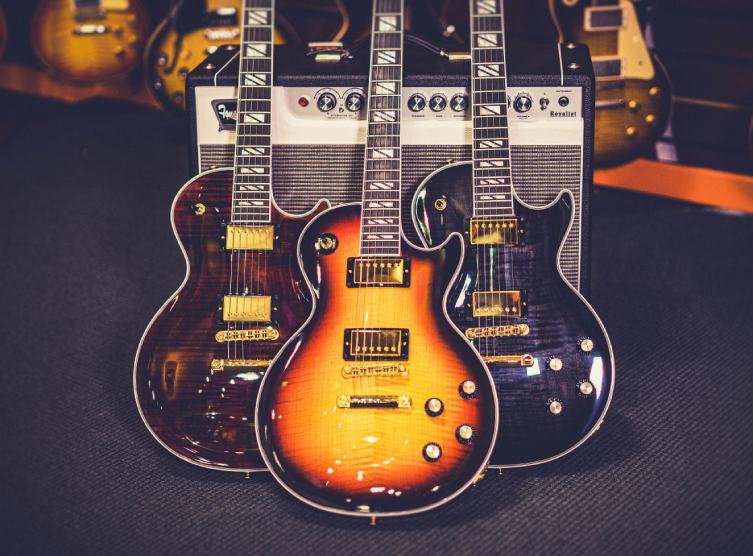
Comparing Modern Collection Les Pauls
As you can see, these Les Pauls have a different agenda, with either a stripped back aesthetic or a bunch of modern player-friendly features. There are plenty of rock, blues, metal and goth guitarists who gravitate more to these models precisely because they don’t instantly evoke ‘British Invasion’ vibes. Lots of these Modern Collection models are cheaper than their Original Collection counterparts, but that’s often a side-issue compared to players just preferring them.
For some, the weight relief is a godsend; for others, the extra switching options can bring more life to the sound of the guitar. These types of guitarist will undoubtedly be at home amidst the Modern Collection Les Pauls.
In terms of comparing the models themselves, its a matter of whether you want the extra features or not. If you don’t, then I’d recommend heading back to the Original collection. If you do, then it’s a matter of personal visual and aesthetic taste: most of the Modern collection offers similar features, particularly in terms of additional switching.
Basically, a Les Paul Modern Studio still looks pretty traditional, whereas a Les Paul Modern has a more glitzy, futuristic look with its white control knobs, metallic colours and so on.
Custom Shop Les Pauls
Gibson’s Custom Shop is where there is a greater level of hand-making happening, with exhaustive attention to detail paid by the builders. This ensures that Les Pauls from the Gibson Custom Shop are the best of the best: they are truly as close as new instruments can get to vintage examples. They make a wide variety of reissue Les Pauls, mainly from the beloved 1958-60 era, with some choice extra additions.
One of the most famous Gibson Les Pauls is the Les Paul Custom, which I’ll look at now, followed by the Axcess and finally the Murphy Lab instruments, which I’ll explain more about a little later.

Gibson Les Paul Custom
The Gibson Les Paul Custom has been around since 1954 (some sources say late 1953) as a more upmarket version of the Standard. Requested by Les Paul himself, the guitar’s black and gold look was created because Les Paul wanted it to look like a tuxedo. The version most of us think of is from 1957, when humbucking pickups were used instead of the P90 and alnico V ‘staple’ pickup that the Custom originally had.
The Les Paul Custom differs from the Standard in these ways…
- Plain maple top (under a generally opaque finish)
- Multi-ply binding to front of body and headstock; binding on back of body and fingerboard
- Slightly larger headstock with ‘split diamond’ inlay
- Ebony fingerboard with block inlays
- 498T & 490R pickups
- Rounded C neck profile

Les Paul Axcess
The Axcess is essentially a modified Les Paul Custom, fitted with a Floyd Rose locking tremolo system and featuring a ‘axcess’ heel. This is a neck join that is contoured to allow much better upper fret access (hence the title), which is something that some Les Paul fans find difficult to do on regular models. It’s unusual to see a Gibson Les Paul with a Floyd Rose tremolo - though hardly unheard of - and indeed some Axcess models have a hard tail instead.
This guitar isn’t really comparable to any other Les Pauls due to the locking whammy bar, so I’d say that this one is perhaps for shred/prog players (Alex Lifeson loves them) who want plenty of the Les Paul vibe but with divebombing ability!
Murphy Lab
The Murphy Lab is a subsection of the Gibson Custom Shop, and their job is to artificially create/simulate decades’ worth of wear and tear on an otherwise brand new Custom Shop guitar. Tom Murphy is the head of this division, and instead of documenting what they do here, have a look at this video interview I conducted with Tom a year or so ago, where he goes into some detail about his process:
The Murphy Lab can conceivably do their thing with anything offered by the Custom Shop, though favourites seem to be Les Paul Customs, 58s, 59s and 1960 Standards. Historically speaking, the necks of those made in 1958 were larger than those in 1959, which again were bigger than the necks of 1960. General consensus amongst guitarists is that the 1959 neck profile is one of the very best ever made, so it’s a popular thing to recreate in these vintage replicas.

Each Custom Shop instrument is meticulously crafted with the best timbers and the greatest attention to detail, before being passed across to the Murphy Lab team, who artfully age each guitar to a prerequisite level of distress.
These Custom Shop examples are the ‘toppest’ of top-end Gibson guitars. Choosing one of these is a highly personal and selective process, so it doesn’t make a ton of sense to compare them against each other, since the whole point of the exercise is to offer highly individualised takes on classic Les Pauls.
The Les Paul Custom model itself is built by the Gibson Custom Shop, so you can expect it to be made to an even higher level of quality than a Les Paul Standard, for example.
Comparing Gibson Les Pauls
So, those are the main Les Pauls available from Gibson, outside of Artist models. This article is about comparing the differences, and whilst I’ve done that as we’ve been going along, it also makes sense to have a comparative look at Gibson’s Les Paul offerings as a whole.
Firstly, I think it’s most sensible to compare like with like; in other words, I don’t believe that comparing a Les Paul Tribute to a Murphy Lab ‘59 Standard is going to be very useful to most readers.
That said, I do see the value in comparing, say, the different varieties of Les Paul Standard. You can select a neck preference, select from the range of finishes and also pick from Standard (which has a figured top), Plain Top, Figured Top (which has different finishes) and Faded, which confusingly also has a figured top! There’s a few hundred pounds of difference between these models, and the differences can sometimes seem pretty subtle.
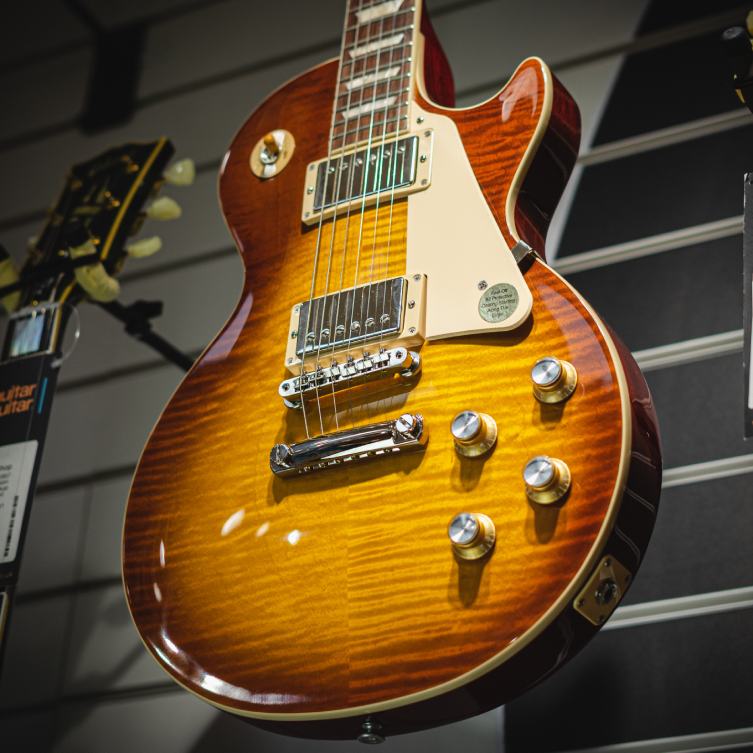
The same goes for Les Paul Studios: choosing between the Studio and the Modern Studio means picking whether you want a compound radius ebony fingerboard, a contoured heel and extra switching options or not. Both models give you the same weight relief and visual look, so they are most definitely comparable. There’s a pretty deep level of choice available, which we’ve never had before.
This level of choice means though, is that you can pretty much get the exact Les Paul you’re after. It’s no longer a matter of choosing between Heritage Cherry Sunburst or Ebony, so even though the choices can be confusing, we’ve really never had it better.
The Les Paul For You
For the sake of fun, here are some possible categories of player, and some perfect choices of Les Paul:
- Someone who wants the classic ‘real deal’ at a reasonable price: Gibson Les Paul Standard 50s
- Hard Rocker: Gibson Les Paul Custom
- Hard Rocker with a bad back: Gibson Les Paul Modern Studio
- Covers band player who needs a flash look and lots of sounds: Gibson Les Paul Modern
- Goth rocker: Gibson Les Paul Custom or Studio
- Classic rock fan: Gibson Les Paul Standard Faded
- Indie Rocker: Gibson Les Paul Junior
There are all kinds of permutations on offer, of course, so have a good look at this blog to acquaint yourself with what each Les Paul model does and doesn’t have. It’s an interesting thing to play a variety of disparate models and find out just how different they can feel and sound, despite a strong ‘house style’ from Gibson.
It’s deservedly one of the world’s greatest guitars, but as we’ve seen today, there is far from ‘one style for all’. There is most definitely a Les Paul out there for you, so dive in and find which style is best for what you do!
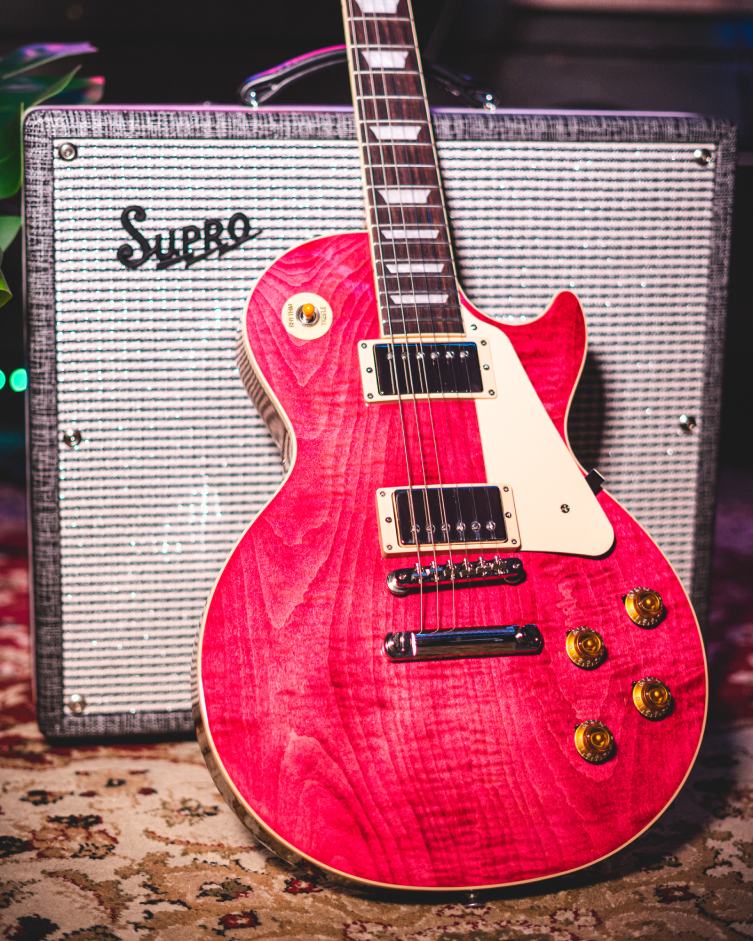
Click to Browse our Full Selection of Gibson Les Pauls




